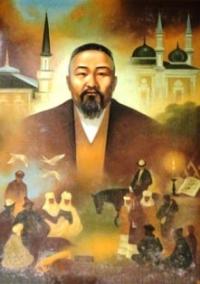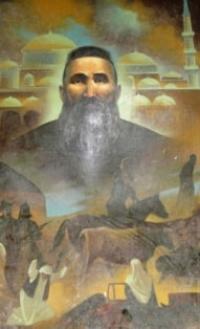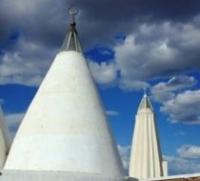You are here
Memorial of Abai and Shakarim.



Memorable places of the East Kazakhstan area.
«Memory is the treasure house of the mind wherein the monuments thereof are kept and preserved»
Thomas Fuller.
Water-based leisure area on Zaisan lake.
Two white towers point skywards from the steppe on the edge of the aul of Zhidebay, 180 kilometres south of Semey. They are visible from up to 20 kilometres away, but coming nearer, the entire complex of monuments, including the double mausoleum for the national poet Abai Kunanbayev and the philosopher Shakarim Kudayberdiyev come into view.
Both men's fate is closely linked to Zhidebayr Abai spent the winter months here during his childhood, while his younger relative Shakarim was brought up by his father's family. Zhidebay was the winter residence of Abai's father, a wealthy Kazakh who had been authorized to act as administrator with the title of sultan over a large area between Karkaralinsk and Semey.
It was a very lively home; the family was closely intertwined and Abai liked to invite his Russian friends from Semey. After his eldest son Ospan had married, the Kunanbayev patriarch gave him the estate and moved with the rest of the family to the Akshoky Valley 50 kilometres away.
After Ospan's death, Abai took over the estate and went to live there with his three wives, Dilda, Aygerim and Erkezhan. His marriage with Dilda had been arranged without his agreement and in spite of the fact that he was in love with another girl.
Aygerim was his great love in later times and this marriage had been his dearest wish. As for Erkezhan, she had been Ospan's wife and, in line with steppe tradition, came under her late husband's brother's care.
Mukhtar Auezov gives a wonderfully gripping and colourful description of Abai's life in conflict-ridden XIX Century Kazakhstan in his renowned book Abai's Way (also known as The Path of Abai). Today, the house of the Kunanbayevs is a museum in which numerous objects of the family's daily life are displayed.
The books in particular show many interesting aspects of the lifestyle of a wealthy Kazakh family during the second half of the XIXth Century. The mausoleum stands a kilometre off the road. Even on days when it is supposed to be closed, there is always someone in the aul ready to open it and invite visitors on a guided tour.
In 1995, the double mausoleum, designed by architect Век Ibrayev, was opened in the presence of President Nazarbayev and 20000 other guests. It is 180 metres long and 60 metres wide. It is crowned by two elegant, tower-like mausoleums: the biggest is 37 metres high and nine metres in diameter, and dedicated to Abai; the smaller one, 35 metres high, is in honour of Shakarim, who perished in Stalin's purges in 1931.
The mausoleums stand on a structure shaped like a pyramid and composed of three stone plates on top of one another. The dark one on the bottom symbolises the ancient history of the Kazakhs, the pink middle stone stands for the life and times of Abai and Shakarim, and the white sandstone plate on top represents the present.
An extraordinary library has been built inside the mausoleum's foundation. It receives daylight from above and forms a ring around an amphitheatre embedded in the foundation. Each year a recital competition is held here, for schoolchildren from the eighth to eleventh school years.
The record was set by a schoolgirl who recited - by heart - 400 poems and songs by Abai. This unusual architectural complex is completed by a futuristic mosque, designed with moving simplicity and consisting of four round spaces, each crowned by a conical tower with the obligatory mihrab as their sole decoration.
Also in Zhidebay, close to the home of the Kunanbayev, there is a simple stone monument consisting of a circular block with a small pyramid on top. According to geographers, this is the centre of Eurasia. The location is supposed to have an extraordinary level of positive radiation.
Some historians claim that this concentration of energy explains why the region has produced so many geniuses. Whether you believe this or not, it can do no harm to stand here for a while and let a bit of energy flow through you.
Authority:
The guidebook across Kazakhstan . Authors Dagmar Schreiber and Jeremy Tredinnick. Publishing house "Odyssey".2010.
Photos by
Alexander Petrov.







